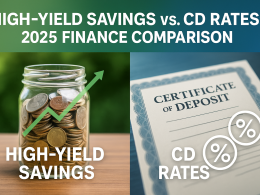Investing with limited funds is a practical and achievable goal for many people. Despite the misconception that investing requires substantial capital, there are several strategies and opportunities available for those who wish to start small. This article provides a comprehensive guide on how to begin investing with minimal resources, including practical steps, key investment options, and an analysis and comparison of various methods.
Understanding the Basics of Investing

Before diving into specific investment options, it’s crucial to grasp the fundamentals of investing. Investing involves putting money into assets or ventures with the expectation of generating a return over time. The core principles include understanding risk, return, and diversification.
- Risk: All investments carry some level of risk, which refers to the chance of losing money or experiencing lower returns than expected. It’s essential to assess your risk tolerance before investing.
- Return: This is the gain or loss generated from an investment. Higher returns usually come with higher risk.
- Diversification: This strategy involves spreading investments across various asset classes to minimize risk. Diversification helps protect against significant losses.
Steps to Start Investing with Little Money
- Set Clear Financial Goals
Before investing, define what you want to achieve. Your goals might include saving for a down payment on a house, building a retirement fund, or simply growing your wealth over time. Clear goals will guide your investment choices and strategy.
- Create a Budget and Build an Emergency Fund
To invest wisely, first establish a budget to manage your finances and ensure you have an emergency fund. An emergency fund should cover three to six months’ worth of expenses and provide financial security in case of unexpected events. Once your emergency fund is in place, you can allocate a portion of your savings to invest.
- Educate Yourself
Understanding investment basics is essential. Read books, attend seminars, or take online courses to gain knowledge. Being informed helps you make better decisions and avoid costly mistakes.
- Choose the Right Investment Account
Select an investment account that suits your needs. Common types include:
- Brokerage Accounts: Offer flexibility and a wide range of investment options but may come with fees.
- Retirement Accounts: Such as IRAs (Individual Retirement Accounts) or 401(k)s, provide tax benefits and are ideal for long-term goals.
- Start Small and Be Consistent
You don’t need a large amount of money to start investing. Begin with small amounts and invest regularly. Consistent contributions, even if modest, can grow over time due to the power of compounding.
Investment Options for Small Budgets
- Index Funds and ETFs
- Index Funds: These are mutual funds designed to track a specific index, like the S&P 500. They offer broad market exposure and low fees.
- ETFs (Exchange-Traded Funds): Similar to index funds but traded on stock exchanges. They offer diversification and are often cost-effective.
Analysis Table: Index Funds vs. ETFs
| Feature | Index Funds | ETFs |
| Trading | End-of-day trading | Real-time trading |
| Minimum Investment | Varies by fund | Generally low |
| Fees | Often higher than ETFs | Generally lower |
| Flexibility | Less flexible | More flexible |
- Robo-Advisors
Robo-advisors use algorithms to manage your investments based on your risk tolerance and goals. They offer low fees and are a good option for beginners.
Comparative Table: Traditional Advisors vs. Robo-Advisors
| Feature | Traditional Advisors | Robo-Advisors |
| Cost | Generally higher | Lower cost |
| Personalization | High | Moderate |
| Minimum Investment | Higher | Lower |
| Accessibility | Limited | 24/7 online access |
- Micro-Investing Apps
Micro-investing apps allow you to invest spare change or small amounts of money. These apps often round up purchases to the nearest dollar and invest the difference.
- Peer-to-Peer Lending
This involves lending money to individuals or small businesses through online platforms. Returns can be higher than traditional investments, but the risk of borrower default is a consideration.
- Dividend Stocks
Investing in stocks that pay dividends can provide a steady income stream and potential for capital appreciation. Look for companies with a history of reliable dividend payments.
Managing Risks
Investing always involves risk, especially when starting with little money. Here are strategies to manage and mitigate risk:
- Diversify Your Portfolio: Spread your investments across different asset classes and sectors.
- Invest in Low-Cost Funds: Minimize fees to keep more of your returns.
- Regularly Review Your Investments: Assess performance and adjust as needed.
- Avoid High-Risk Speculative Investments: Especially when you have limited funds.
Conclusion
Starting to invest with little money is not only possible but can be a smart financial move. By setting clear goals, educating yourself, choosing the right investment options, and managing risks, you can build a solid foundation for your financial future. Whether you opt for index funds, ETFs, robo-advisors, micro-investing apps, or dividend stocks, remember that consistency and patience are key. Over time, even small investments can grow substantially, helping you achieve your financial objectives.
- Investment Basics: Understand risk, return, and diversification.
- Steps to Start: Set goals, budget, build an emergency fund, educate yourself, and invest regularly.
- Investment Options: Index funds, ETFs, robo-advisors, micro-investing apps, peer-to-peer lending, and dividend stocks.
- Risk Management: Diversify, choose low-cost funds, review investments, and avoid high-risk ventures.










